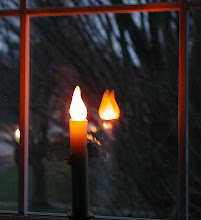http://www.stuarthsmith.com/aerial-dispersant-spraying-cant-hide-oil-slicks-near-deepwater-horizon-site
December 14, 2011
It’s a hauntingly familiar sight: Airplanes buzzing over the Gulf of Mexico spraying toxic dispersant in a flight path from Breton Sound bearing southeast to the Macondo Prospect, the epicenter of last year’s monster oil spill. Yet despite these regular Corexit sprayings, the oil slicks and sheen persist – visible from the air – in the waters surrounding the Deepwater Horizon site. According to On Wings of Care pilot Bonny Schumaker, who flew over the site on Dec. 9, the surface oil is fanning out “in lines and patches over an area of at least 50 square miles.”
Last month, aerial surveillance footage captured a fleet of huge oil-related vessels, some equipped with ROVs, working the waters above the Macondo Prospect. BP gave the bogus explanation that it’s conducting research on “natural seeps in the area” .... It was a typical BP “non-denial denial” – acknowledging the problem but denying any blame – to blunt escalating public concern over fresh oil that’s been reported at the site since Aug. 19.
As I’ve mentioned here before, BP was required to conduct a survey of the seafloor prior to drilling in the Macondo Prospect. There is no record of any large natural seeps in the area that has ever been produced. Therefore, we can assume that any seeps that now exist must be tied to the BP disaster and the heavy-handed attempts to cap the gushing well, such as lowering a 70-ton dome over top of it. Those activities are likely to have caused cracks and fissures in the seafloor around the wellhead.
That sort of seafloor leakage cannot be capped, plugged or killed. It will continue until the Macondo Prospect essentially runs dry (see link below to my previous post). According to BP, the prospect was estimated to have contained 50 million barrels before last year’s disaster, which spewed approximately 5 million barrels into the Gulf. You do the math. It ain’t pretty.So it goes...
--

















2 comments:
I could have gone a long time without knowing this. Goes right along with the story I heard tonight about the HUGE increase in mercury in the waters of the Madre de Dio area of Peru . . . from gold mining. Fish at the top of the food chain eaten twice a week imparts a dose 7 times what is considered "safe." If we don't murder ourselves off in wars, we will surely poison ourselves off the planet.
I had you in mind when I posted it. I suppose the Gulf will reach a critical point at sometime in the near future and it will crash.
Tough noogies fer the Gulf!
Post a Comment